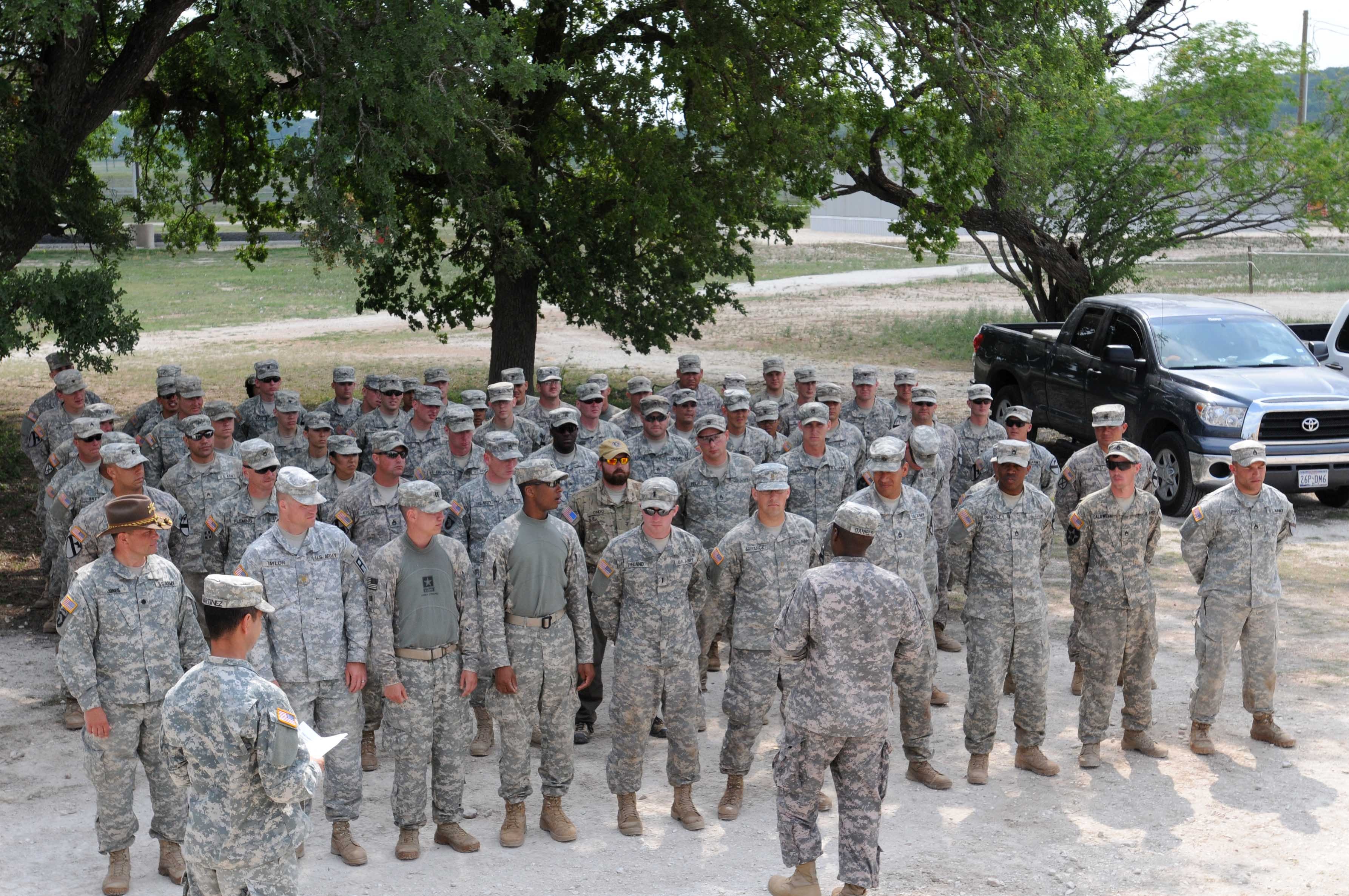FORT HOOD, Texas- Combat tracking or "Man-Tracking" has been in existence throughout the world for decades but died off in the U.S. after the Indian wars in the early 90's, according to uswardogs.org.
As each war in history progressed so did the fighting tactics, which recalled tracking within the U.S. military until it died off again in the early 70's, according to the website.
Even In today's modern Army with its increased technology, conventional counterinsurgency tactics such as tracking are needed more than ever, said Lt. Col. Adrian Bogart, commander of the 2nd Battalion, 393rd U.S. Infantry Regiment, First Army.
To learn these tactics, Soldiers from throughout the 1st Cavalry Division participated in a Combat Tracker Course on Fort Hood April 11-21.
This is the first time the course has been taught on Fort Hood, said Mike Greguras, a tracking instructor for the course.
The course is designed to pursue the enemy, deny him sanctuary and gather intelligence, he said. It incorporated basic tracking skills and intelligence gathering techniques such as tracking "spoor", which is identifying marks like footprints, decaying food and broken vegetation, he said.
All training came in the form of classroom instruction, practical exercises and culminated with a filed training exercise where Soldiers were grouped together to track a person or "quarry", said Greguras.
Like most trackers, Soldiers were taught to work in teams. This advantage aids in successful completion of the course and in real-world situations.
"They (trackers) work in teams...more sets of eyes," said Greguras.
More team members helps broaden the focus and allows the team to see the whole picture, he said.
Seeing the whole picture is vital because a key element in tracking is knowing when something doesn't look right, said Greguras.
Knowing when something is out of place is accomplished by Soldiers broadening their search area, a technique called "macro tracking", said Staff Sgt. Sean Ireland, a military policeman with Headquarters and Headquarters Company, 2nd Special Troops Battalion, 2nd Brigade Combat Team, 1st Cav. Div.
This technique closes the time-distance gap that is between the trackers and the quarry, said Ireland. He believes this is the most difficult element to work with in tracking.
"The enemy has a head start," he said, "Macro tracking helps us move faster to close the gap."
Tracking teams can rely on outside elements such as aviation support to help capture their quarry quicker, said Greguras.
Some may see support like aviation as a use of technology for a skill that is anything but technological, but Greguras said tracker teams should utilize small pieces of advanced equipment to enhance certain areas of tracking, especially at night.
"Night vision goggles and thermal imaging devices can help a lot with tracking," he said.
Technology aside, tracking is a basic, fundamental skill that saves lives by rescuing prisoners of war and apprehension of those whom commit crime, said Greguras.
Ireland said tracking is an effective skill to attain and believes its use can be utilized with his job as a military policeman, not just within a battlefield climate.
Like all skills, he said it was one that would require a refresher to maintain success.
Real success came from more than 25 Soldiers from the 1st Cav. Div. graduating the course, said Bogart. The Soldiers are now part of only the third tracker battalion in the Army.
No second tracker course has been announced at this time.






Social Sharing